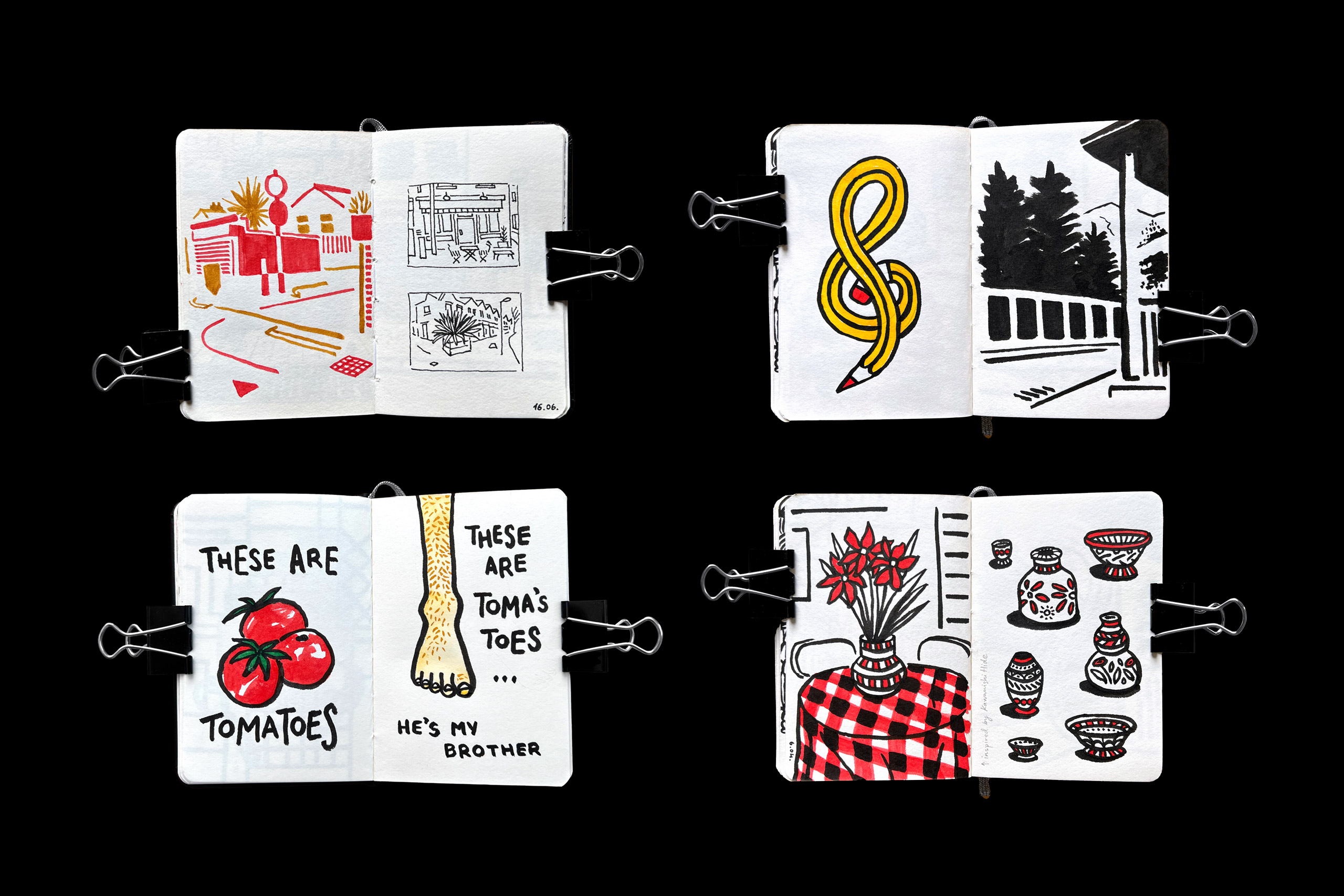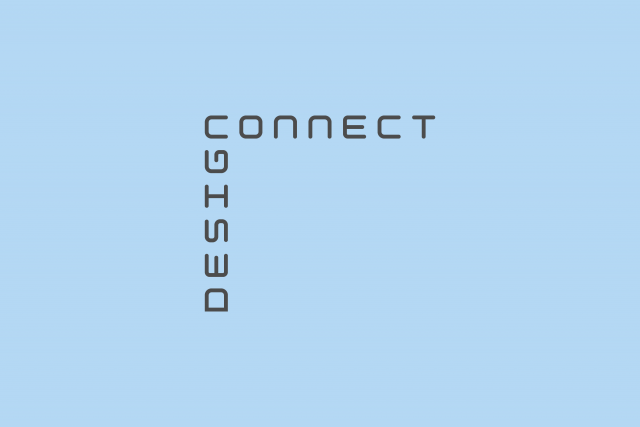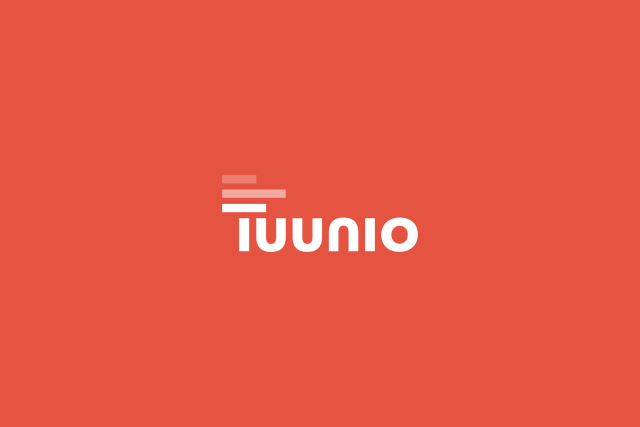Daily sketchbooks

Drawing every day
Sketchbooks have been a significant part of my creative process for almost two decades. All my projects start with drawings and notes in my “work” sketchbook, usually an A5 format, which I use every day (you can see them in many of my other case studies).
However, like any musician or athlete, there is a big difference between practice and performing (or training and competing). Top musicians and athletes practice many hours every day, and what we see during a concert or a competition is just the tip of the iceberg. So I think that drawing every day is really important for any artist or designer.
Drawing, not browsing
These days I carry a pocket sketchbook and a few pens with me all the time. The main goal is to do at least one drawing every day, no matter how small. That’s easy to achieve even if I’m very busy. A second goal is to try to draw something instead of looking at my phone umpteen times throughout the day.

Drawing subjects
Many drawings are observational, based on what I see during the day, or from my own photos (I have tens of thousands, organised in folders). Some drawings are ideas that come to my mind. The best way to refine an idea is to put it down on paper. Quite often I get a better idea while drawing. When I feel “stuck”, I’ll start drawing something simple (a tree, flowers, something I’ve drawn before), and soon ideas will start coming. Some drawings are experiments, trying different tools or styles, or learning from artists I admire. And some drawings are sketches or studies for my larger projects.
Drawing benefits
Seeing the progress even over a short period of time is really motivating. Drawing every day also helps my mental health — it’s a form of “being present”, after all. I feel calmer the more I draw. I might not be happy with all the drawings I make, but usually 1 in 4 is a “good” one. So by the time I finish a sketchbook, there are quite a few of them that make me happy.



Videos
The videos below show some of my recent daily sketchbooks, page by page. You can also find them on my Youtube channel — I post new videos regularly, so you might like to subscribe to my channel.
If the pace feels a bit slow, you can change the playback speed to 2x in the bottom-right corner of each video :)
Making it a daily habit
This sketchbook in particular is the one during which I decided to draw more often. The quality of the drawings gets better as the habit becomes more frequent.
Resources — books
If you’re really interested in sketchbooks and the drawing process, here are a few great books (please consider supporting independent bookstores, Wordery or Bookshop are good online options, among others):
— Christoph Niemann, Sunday Sketching (Abrams)
— Christoph Niemann, Souvenir (Diogenes)
— Milton Glaser, Sketch & Finish (Princeton Architectural Press)
— Milton Glaser, Drawing is Thinking (Overlook Duckworth)
— Milton Glaser, Posters (Abrams)
— Joost Swarte, New York Book (Dargaud)
— Jean Jullien (Phaidon)
— Hockney Van Gogh, The Joy of Nature (Thames & Hudson)
— Wayne Thibaud, Draftsman (Thames & Hudson)
— Alan Fletcher, Picturing and Poeting (Phaidon)
— Alan Fletcher, Beware Wet Paint (Phaidon)
— Christopher Brown, Alphabet of London (Merrell)
— David Gentleman, My Town: An Artist’s Life in London (Penguin)
Resources — films
A few inspiring films that show sketchbooks and talk about the importance of drawing:
— Abstract: The Art of Design, Christoph Niemann (46 min)
— Go Behind The Scenes with Illustrator Christoph Niemann (3 min)
— What Makes An Artist? David Hockney (3 min)
— David Hockney shows his sketch book (6 min)
— Milton Glaser: To Inform & Delight (73 min)
— An Artist’s Life in London | Work in Progress with David Gentleman (5 min)
— Nicer Tuesdays: Jean Jullien (13 min)
Resources — sketchbooks
These below are my favourite sketchbooks. I generally prefer hardcovers, but I do use softcovers as well.
— Hahnemuehle Travel Journal, 9x14cm format, 140gsm paper, 124 pages
— Hahnemuehle Travel Booklet, 9x14cm and 13,5x21cm formats, 140gsm paper, 40 pages (these have thick brown paper softcovers and are great for short series or projects, or if you just find a thicker sketchbook a bit intimidating)
— Leuchtturm 1917 Edition 120G, A5 format, 120gsm paper, 203 numbered pages (using currently as my larger work sketchbooks)
Other good options:
— Hahnemuehle Watercolour Book, A6 format, 200gsm paper, 60 pages
— Hahnemuehle Watercolour Book 100 % Cotton, A6 format, 250gsm paper, 60 pages
— Leuchtturm Pocket Sketchbook, 9x15cm, 180gsm paper, 96 pages (seemingly discontinued, but you can still find some online or in shops)
— Leuchtturm 1917 Notebook Classic, A5 format, 80gsm paper, 251 numbered pages (I used these before the 120gsm version)

Resources — pens & inks
You can make great drawings with pretty much anything. But good quality tools make your life easier and are often less wasteful. Plus it’s always fun to experiment, entire new projects can come out of just trying a different tool. Most of the drawings above are done with these pens:
— Pentel Pocket Brush Pen — I usually carry a few brush pens with me, strapped to my pocket sketchbook with a rubber band. You can buy cartridges in four different colours, but I prefer to fill the cartridges myself with the coloured inks mentioned below.
— Rohrer and Klingner pigmented calligraphy ink — these inks have amazing colour range, I use all of them in brush pens, or with pipettes (see my ink drawings project).
— Liner pens — I use several brands, for example Molotow Blackliner, Faber-Castell Ecco, Uni-Pin by Mitsubishi or Rotring Tikky Graphic.
— Caran d’Ache Fixpencil with B lead (used sometimes for light drawing under the ink strokes) — any good mechanical or normal pencil will do, but this is just a beautifully designed object and it brings me joy every time I pick it up.
Featured
Glamour magazine (the Romanian edition) were very kind to interview me and feature my sketchbooks in their autumn-winter 2022-2023 issue, along four other artists: Alina Marinescu, Ana Letzner, Sorina Vazelina and Tuan Nini.
Stay up to date
For regular updates (every few months) about my projects, sign up to my newsletter. You could also follow me on Instagram, LinkedIn or Twitter.

















